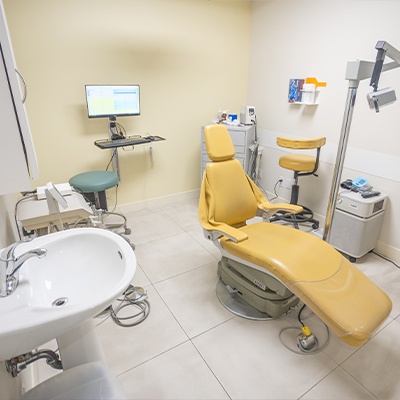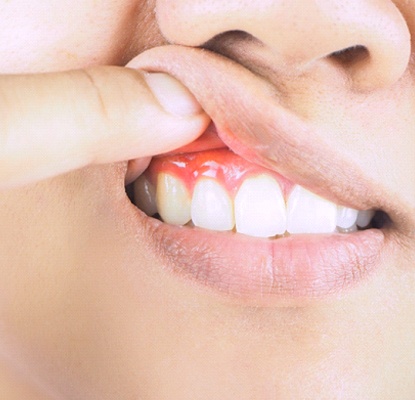Gum Disease Treatment – East York • Toronto, Ontario
Say Goodbye to Gingivitis and Periodontitis

You already know to take good care of your pearly whites, but what about your gums? About 70% of Canadians will suffer from gum disease at some point, and if the condition isn’t found and treated quickly, you could be in serious danger of losing your teeth. Luckily, the dentists at Donlands Family Dentistry have the tools and skills needed to treat or even cure gum disease; if you’re noticing bleeding or other worrisome symptoms in your gums, contact our office today to set up an appointment.
Why Choose Donlands Family Dentistry for Gum Disease Treatment?
- Treat patients of all ages
- Evening appointments available
- Caring, gentle dentists
What is Gum Disease?

Gum disease is sometimes called “periodontal disease.” If the bacteria in your mouth enter your gums, they’ll cause an infection. Gingivitis is the earliest form of the disease, and in many cases, you can reverse it with good oral hygiene. However, if gingivitis isn’t properly treated, it can become periodontitis, which can easily lead to tooth loss and may even contribute to potentially deadly heart disease. In general, it’s best to have gum disease treated as soon as it’s found, whether it’s by noticing the symptoms on your own or during a regular dental exam.
Chances of Getting Gum Disease

Poor oral health caused by a lack of adequate brushing or flossing is one of the biggest contributors to gum disease, but there are several other factors as well:
- Age: Many studies have shown that older people tend to have the highest rates of gum disease.
- Smoking: Using tobacco puts all kinds of new bacteria in your mouth and prevents the gums from healing themselves if they’ve been injured.
- Poor Nutrition: If you don’t eat well, your body’s immune system will suffer and will have a harder time fighting off infections.
- Genetics: Some patients are more susceptible to gum disease. (Although this doesn’t necessarily guarantee they will get gum disease.)
Symptoms of Gum Disease

Unfortunately, many patients don’t even realize that they’re suffering from gum disease until it’s too late. Be on the lookout for:
- Red or swollen gums
- Bleeding easily, such as when you brush or floss or bite down on something hard
- Receding gums
- Loose teeth
- Sores in the mouth
- Pus between the gums and teeth
- Bad breath
Treatment Options
There are a few different ways gum disease can be treated depending on how advanced it is. Many times, we’ll use a special tool to scrape away plaque and tartar that’s built up near or around your gums (scaling) before we smooth the tooth roots so that the bacteria won’t come back (root planing). We can also prescribe antibiotic therapy to further help fight the infection.
